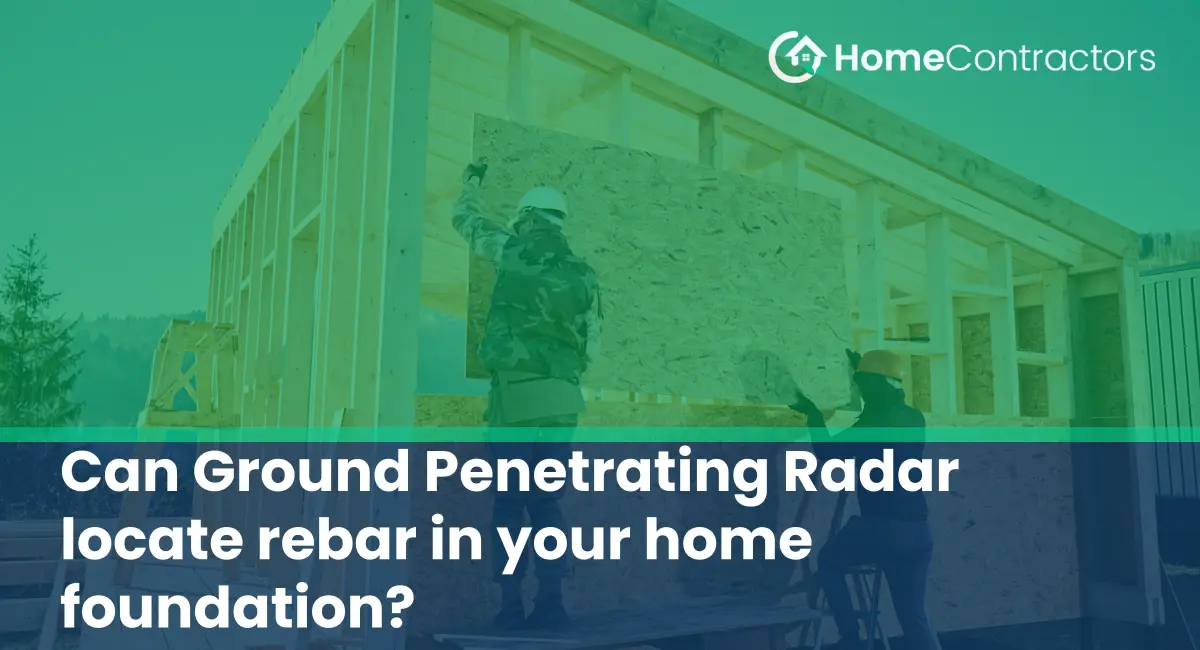Understanding Ground Penetrating Radar:
Ground-penetrating radar is a non-destructive testing method that utilizes electromagnetic waves to create images of subsurface structures. By emitting radar signals into the ground and measuring the reflected waves, GPR can identify the presence of various materials and objects beneath the surface. It is commonly used in archaeology, geology, and construction to locate utilities, underground pipes, voids, and in this case, reinforcing steel.
The Basics of Rebar and Its Importance:
Rebar, short for reinforcing bar, is typically made of steel and is used to strengthen concrete structures. It is strategically placed within the foundation and other concrete components to enhance their load-bearing capabilities. With the passage of time, factors such as moisture, temperature changes, and external forces can affect the durability of the rebar, potentially compromising its integrity. Therefore, it is crucial to have accurate knowledge about the state of rebar in your home’s foundation.
Benefits of Using GPR to Locate Rebar:
- Non-destructive method: Unlike destructive testing methods that may require drilling or cutting into the concrete, GPR allows for non-invasive inspection. This means that the foundation remains intact and undamaged throughout the assessment process.
- Accuracy in locating rebar: Ground-penetrating radar can accurately identify the presence and location of rebar within the foundation. It can provide a clear picture of rebar patterns, spacing, and depth, allowing for a comprehensive understanding of the structure’s reinforcement.
- Time-saving: GPR can quickly scan large areas of concrete, providing immediate results. This saves time compared to traditional methods that involve manual inspection or potential exploratory digging.
Limitations and Challenges:
While ground-penetrating radar offers significant advantages in locating rebar, it does have limitations and challenges to consider.
- Signal penetration: The depth to which GPR signals can effectively penetrate the concrete depends on various factors, including the concrete’s composition and moisture content. In some cases, rebar located at greater depths may be challenging to detect accurately.
- Interference from surrounding materials: GPR signals can be affected by materials with both high and low electromagnetic conductivity, such as clay or asphalt. These interferences can make it difficult to differentiate between rebar and other objects.
- Interpretation of data: Proper interpretation of the GPR data requires experience and expertise. The images produced by GPR may not always be straightforward, and it takes skill to accurately interpret them for an accurate assessment of the rebar.
Ground-penetrating radar is a valuable tool that can be employed to locate rebar within home foundations. Its non-destructive nature, accuracy in detecting rebar, and time-saving capabilities make it an attractive option for homeowners and professionals alike. By utilizing GPR, individuals can gain insights into the condition and integrity of the rebar, ensuring the long-term stability and safety of their homes. However, it is important to remember that GPR has its limitations and challenges, necessitating proper understanding and interpretation of the data for an accurate assessment.
